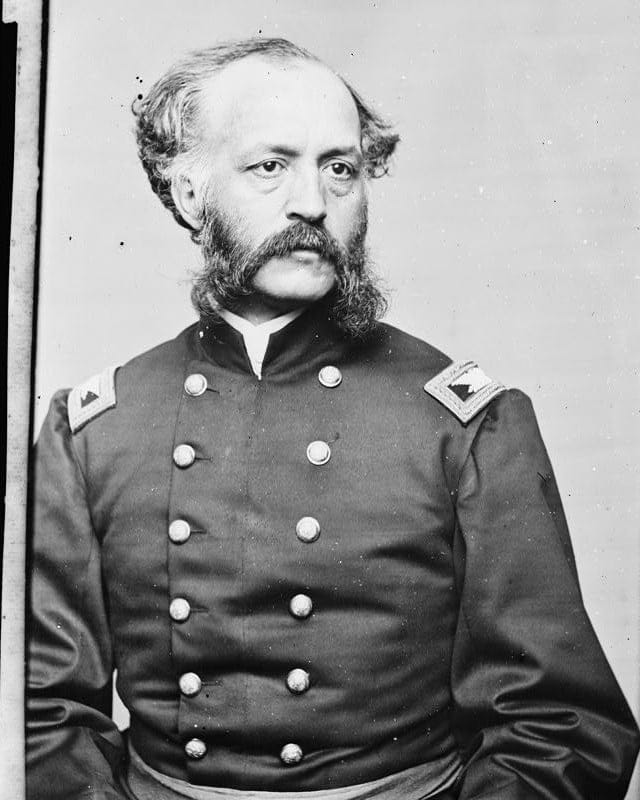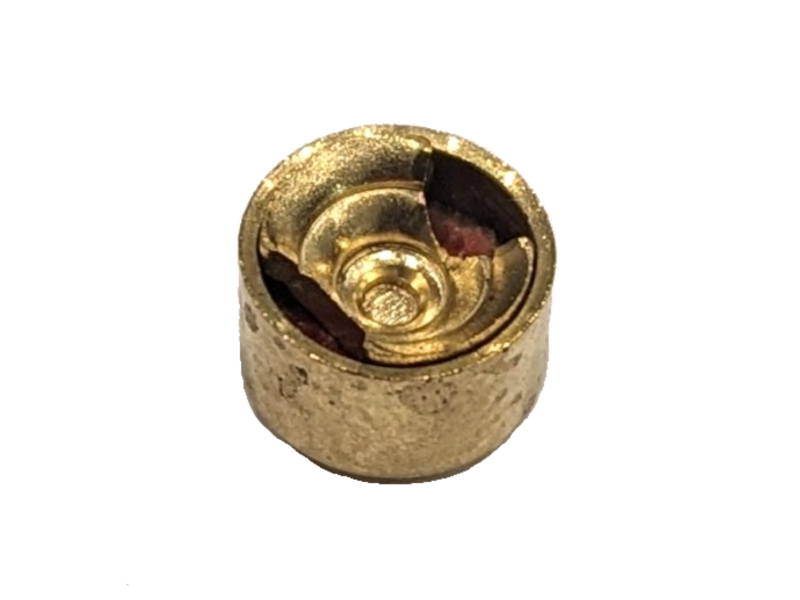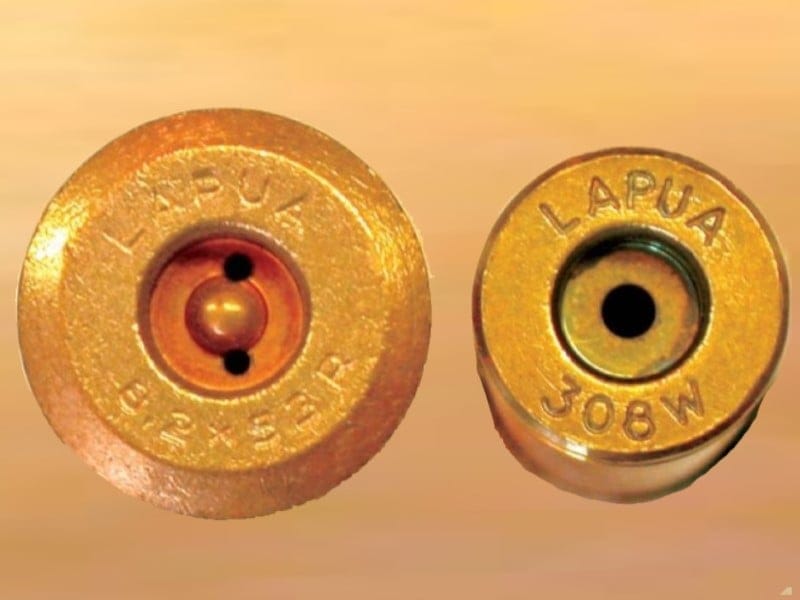The history of the modern primer is a testament to the constant evolution of firearms technology. The primer, a small but indispensable component of ammunition, underwent significant transformations over the centuries. These transformations led to the reliable ignition systems in modern firearms today. Boxer vs Berdan primers are the two most common types of ignition sources compared in modern firearm ammunition.
The earliest firearms, such as matchlock muskets and wheellock pistols, didn’t rely on primers. Instead, they employed intricate ignition mechanisms that were often unreliable and slow to operate. A more efficient and dependable ignition system was necessary as firearms technology advanced.
The first significant step toward the modern primer came with the development of the flintlock mechanism in the early 17th century. Flintlocks used a piece of flint to strike against a steel plate, generating sparks that ignited the priming powder in a pan. This innovation greatly improved the reliability and speed of ignition, making firearms more practical and effective.
The next major advancement in primer technology occurred in the early 19th century with the invention of the percussion cap. A small metal cup filled with a priming compound (typically fulminate of mercury) was placed over a nipple or cone on the firearm’s breech. When struck by the hammer, the cap ignited and sent a flame through the nipple to ignite the main powder charge. The percussion cap was a significant improvement over flintlocks by providing a more consistent and instantaneous ignition source.
American Inventor Hiram Berdan
As firearms continued to evolve, so did primer technology. The invention of Berdan primers by Hiram Berdan is a significant chapter in the history of firearms and ammunition development. Hiram Berdan, an American inventor and U.S. Army Major General, played a pivotal role in revolutionizing ammunition technology during the mid-19th century.

Hiram Berdan was born on September 6, 1824, in Phelps, New York. He received a formal education and later pursued a career in engineering. His keen interest in firearms and ammunition led him to groundbreaking contributions in the field.
In the early 1850s, Berdan began experimenting with new ways to improve firearm reliability and efficiency. At the time, percussion caps were commonly used to ignite gunpowder in firearms. Percussion caps had limitations – especially in military applications. Berdan recognized the need for a more reliable ignition system and this realization fueled his innovation.
Berdan Revolutionizes Firearms Technology
In 1855, Hiram Berdan patented his invention: the Berdan primer. The Berdan primer was a small metal cup containing a priming compound, usually fulminate of mercury, which ignited when struck by the firing pin of a firearm. The key innovation in Berdan’s design was the use of an anvil located inside the primer cup which allowed it to be struck from any direction. This design greatly enhanced reliability compared to percussion cap systems.
Berdan primers quickly gained recognition for their effectiveness, particularly in military applications. The U.S. Army recognized the advantages of Berdan’s invention and adopted his primer design for the Model 1861 Springfield rifle musket. The 1861 Springfield Rifle became the standard issue firearm for Union troops during the American Civil War.
The adoption of Berdan primers was a significant advancement in ammunition technology. These primers were more water-resistant, reliable, and efficient than percussion caps. This made them highly suitable for military use in various weather conditions. Berdan’s invention contributed to the improved performance and accuracy of firearms during the Civil War and ultimately influenced the outcome of battles.
Berdan’s Sharpshooters
Beyond his contributions to ammunition technology, Hiram Berdan also played a crucial role in the development and deployment of specialized sharpshooter units within the Union Army. Berdan organized and commanded Berdan’s Sharpshooters, a group of highly skilled marksmen known for their accuracy and long-range shooting capabilities. These sharpshooters made significant contributions to the Union war effort.

Berdan after the Civil War
After the Civil War, Berdan continued his work in firearms development and ammunition technology. He held several additional patents related to firearms and focused on improving the accuracy and efficiency of firearm mechanisms.
Hiram Berdan’s invention represents a pivotal moment in the history of firearms and ammunition. His innovative primer design significantly improved the reliability and performance of firearms, particularly during the American Civil War. Berdan’s contributions to the field of ammunition technology and his leadership in the Union Army as a Major General cemented his legacy as an important figure in American military history and firearms development. His legacy lives on in the continued use of Berdan primers in certain types of ammunition today.
English inventor Edward Boxer
The invention of Boxer primers by English inventor Edward Mounier Boxer in the 1860s marked a significant advancement in firearms and ammunition technology. Edward Mounier Boxer’s ingenuity and innovation revolutionized the way ammunition was manufactured and used and left an enduring legacy in the field.
Edward Mounier Boxer was born on June 11, 1824, in Gloucester, England. He displayed an early interest in engineering and mechanics, which would eventually lead him to explore improvements in firearms and ammunition. Boxer’s innovative spirit and dedication to advancing the field of ammunition manufacturing set the stage for his groundbreaking invention.
During the mid-19th century, percussion caps were the primary ignition system used in firearms. Like Berdan, Boxer recognized these limitations and sought to develop a more efficient and versatile primer system.
Boxer Revolutionizes Firearm Ignition Systems
In 1866, Edward Mounier Boxer patented his invention, which he named the “Boxer primer.” The Boxer primer featured a small metal cup with a centrally located anvil, a primer compound, and a paper or foil layer that sealed the primer. Boxer’s design allowed for the easy assembly and insertion of primers into brass cartridge cases. The key innovation in Boxer’s design was the ease the primer could be removed and replaced. This was primarily thanks to its self-contained unit. This reusability was a significant improvement over earlier primer systems.

The Boxer primer quickly gained recognition for its practicality and efficiency. It was notably adopted by the British military for their ammunition including the .577/450 Martini-Henry cartridge used in the Martini-Henry rifle. The United States also adopted the Boxer primer system for their military ammunition, most notably for the .45 Colt and .45-70 Government cartridges.
The Boxer Primer Becomes the Standard
One of the primary advantages of the Boxer primer was its ease of reloading. Shooters easily removed spent primers from cartridge cases and replaced them with new primers. This allowed for the reuse of brass cases. This reloading feature became particularly popular among civilian shooters and contributed to the growth of the sport of handloading and reloading.
Boxer’s invention influenced the standardization of primer systems in the firearms and ammunition industry. The Boxer primer design became widely accepted and remains the most prevalent primer system used in modern ammunition manufacturing. It simplified the process of producing, reloading, and maintaining ammunition and made it a preferred choice for military and civilian applications. The Boxer primer’s adaptability and reliability also made it suitable for a wide range of firearms – from handguns to long guns. This further contributed to its popularity.
Edward Mounier Boxer’s invention played a significant role in military engagements. The convenience of replacing primers quickly and efficiently on the battlefield enhanced the effectiveness of troops armed with Boxer-primed ammunition. This innovation had a direct impact on the outcomes of conflicts and battles, underlining the importance of reliable ammunition in the theater of war.
In recognition of his contributions to the field of ammunition technology, Edward Mounier Boxer’s name lives on in the designation of the “Boxer primer.” His innovative spirit and dedication to improving firearms and ammunition manufacturing left an indelible mark on the history of firearms.
Boxer’s Legacy Carries on Today
As time progressed, the Boxer primer design continued to evolve with refinements in materials and production methods. However, the fundamental concept introduced by Edward Mounier Boxer remains the basis for modern primer systems. The Boxer primer revolutionized the field of firearms and ammunition technology. His ingenious design became the standard for ammunition manufacturing for military and civilian applications.
The Boxer primer’s reusability and reliability significantly influenced the development of firearms, marksmanship, and military operations. Edward Mounier Boxer’s legacy endures in every round of ammunition loaded with a Boxer primer. His pioneering spirit continues to shape the world of firearms and ammunition technology.
Comparative Analysis of Berdan vs Boxer
Both primers serve the essential function of igniting the propellant in a cartridge case. However, Berdan vs Boxer primers differ significantly in design, ease of use, and application. A comparative analysis of Boxer and Berdan primers in the context of modern firearms has valuable insight into their strengths and weaknesses.
Design and Structure
The Boxer primer consists of a central anvil, primer compound, and a cup with a single flash hole in the center. This design allows for easy removal and replacement of the primer, making it favored by reloaders.
The Berdan primer features two flash holes and lacks a central anvil. Instead, it has an anvil built into the cartridge case. Berdan primers are typically non-reloadable due to their more complex design.

Ease of Reloading, Availability, and Compatibility
The Boxer primer is easier to reload because it can be removed and replaced using standard reloading equipment. Reloaders de-prime the spent primer, insert a new one, and continue using the same cartridge case.
Berdan primers are more challenging to reload. The multiple flash holes and reliance on the case for the anvil make it difficult to remove spent primers without specialized tools and techniques. As a result, Berdan-primed cases are often considered non-reloadable.
Boxer-primed ammunition is more common and widely available, especially in the United States. Most modern ammunition produced for civilian use utilizes the Boxer primer system. Berdan-primed ammunition is less prevalent in the civilian market, but it is still used in certain military surplus cartridges and in some regions outside the United States.
Reliability and Performance
Boxer primers are generally considered more reliable due to their single flash hole design. They are less prone to misfires as there is a direct and consistent ignition source. Berdan primers are slightly less reliable because they have two flash holes and the ignition source can vary depending on the specific primer design. However, in practice, misfires are relatively rare with properly manufactured ammunition.
Military and Historical Significance
The Boxer primer system has been widely adopted by modern military forces due to its ease of reloading and reliable ignition. It is prevalent in NATO ammunition standards. The Berdan primer system has historical significance and is still used in some military surplus ammunition. However, many modern military forces have transitioned to Boxer-primed ammunition for logistical reasons.
Berdan vs Boxer primers in modern firearms ammunition depends on various factors including reloading preferences, availability, and the specific firearm in use. The Boxer primer is favored for its ease of reloading and widespread availability in civilian markets. Conversely, the Berdan primer is more commonly associated with military surplus ammunition and regions where it remains prevalent. Each primer system has its merits and limitations, and the choice often comes down to practical considerations and the intended use of the ammunition.
Advancements in ammunition manufacturing have led to improvements in both Boxer and Berdan primer systems. Modern manufacturing techniques have made Berdan primers more consistent and reliable, reducing the historical disparities in ignition performance between the two primer types.
For those who prioritize reloading and environmental considerations, the Boxer primer system remains the preferred choice. Its simplicity and compatibility with standard reloading equipment is a convenient option for enthusiasts who recycle brass cases and customize their ammunition.
Berdan-primed ammunition still has its place in the firearms world. Berdan primers remain popular in some regions and in military surplus applications. Berdan primers have demonstrated their reliability over many decades and are perfectly suitable for the intended purposes of military organizations.
The Modern Primer
In the late 19th and early 20th centuries, innovations in primer compounds, materials, and manufacturing techniques further improved the reliability and safety of primers. These advancements led to the development of non-corrosive priming compounds. This eliminated the need for cleaning firearms immediately after use and contributed to the longevity of firearms.
The transition to smokeless powder and primer technology advancements were crucial in the development of modern firearms and ammunition. Today, primers are manufactured with precision, consistency, and reliability that contribute to the overall performance and safety of firearms. Primers come in various sizes and types to match specific ammunition requirements. Thus, primers are an integral component of the modern firearms industry.
The history of the modern primer is a fascinating journey from the early matchlock and flintlock mechanisms to the sophisticated Boxer and Berdan primer systems we use today. Each advancement in primer technology has contributed to the reliability, efficiency, and safety of firearms, shaping the development of modern firearms and ammunition as we know them.
Ultimately, the choice between Boxer and Berdan primers in modern firearms ammunition hinges on individual preferences, intended use, and the firearm. While the Boxer primer system has widespread popularity for its ease of reloading and civilian availability, the Berdan primer system continues to play a significant role in various contexts. The continued prevalence of Berdan and Boxer primer systems emphasizes the importance of understanding the characteristics and applications of both primer types.


